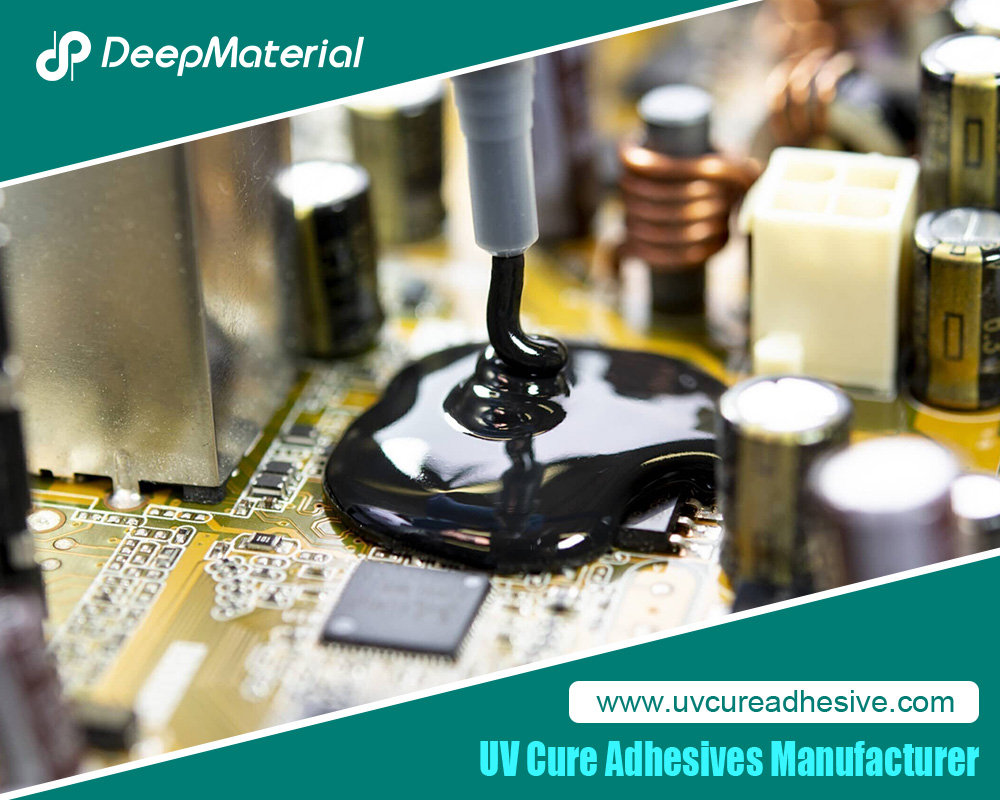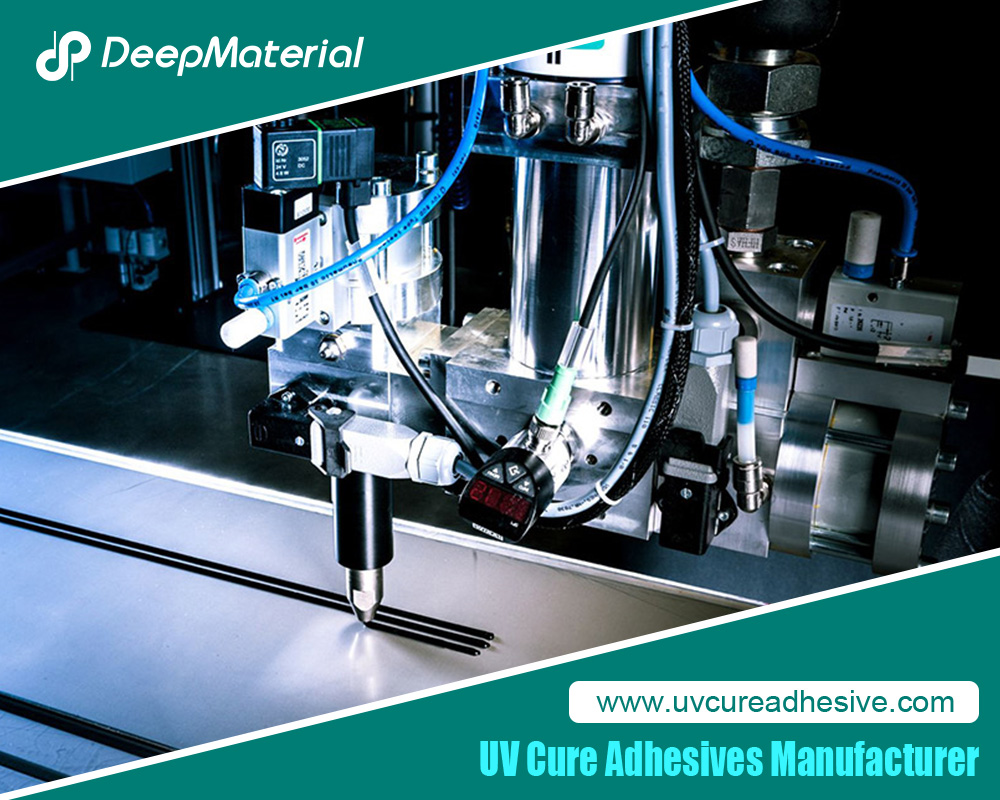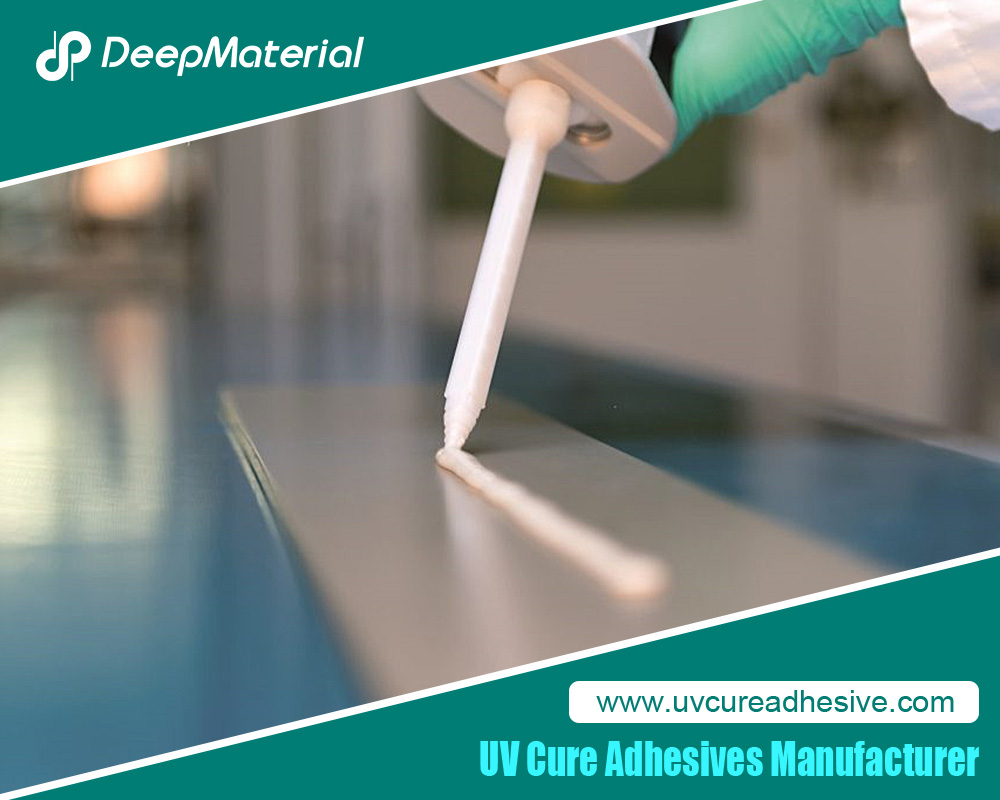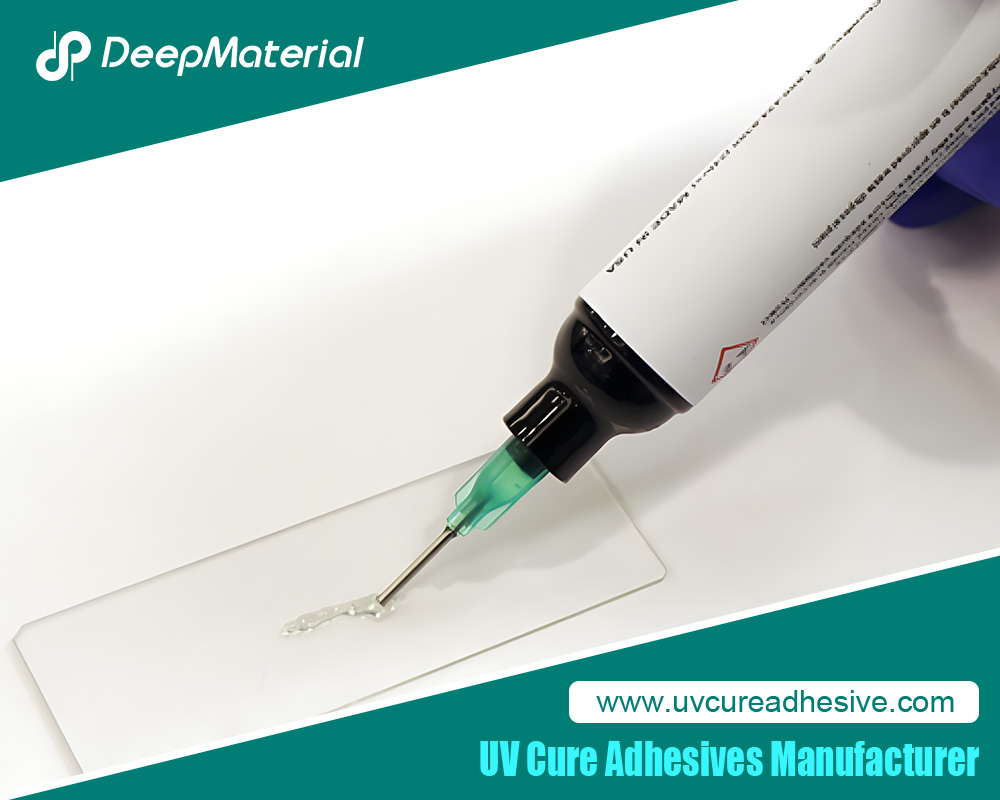In – depth Analysis of the Curing Mechanism of UV Adhesives for Touch Screens
Touch screens have become a key human – machine interface in modern electronic devices, ranging from smartphones and tablets to wearable devices. The performance and reliability of touch screens largely depend on the bonding of various components, and UV adhesives, as high – performance adhesives, play a vital role in touch screen manufacturing. Understanding the curing mechanism of UV adhesives for touch screens is of great significance for optimizing production processes, improving product quality, and promoting the development of touch screen technology.
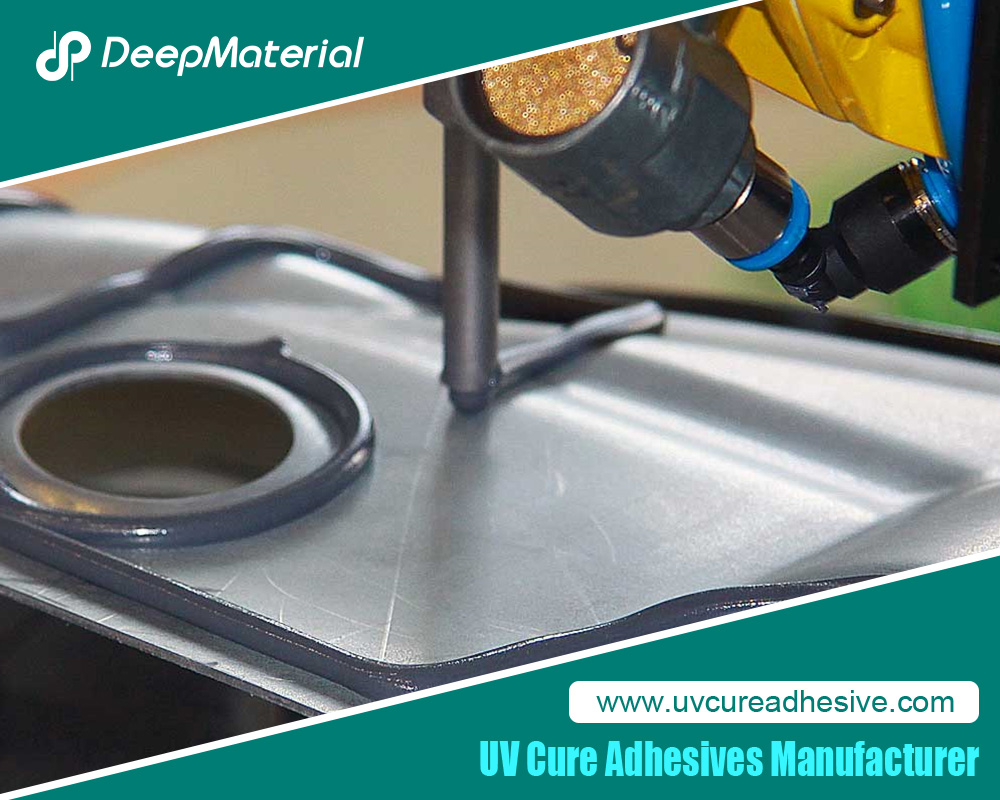
Basic Composition of UV Adhesives
UV adhesives, also known as shadowless adhesives or photosensitive adhesives, are adhesives that must be cured by ultraviolet (UV) light irradiation. Their main components include:
1. Prepolymers
Prepolymers are the main components of UV adhesives and determine the basic properties of the cured adhesive layer, such as hardness, flexibility, and chemical resistance. Common prepolymers include epoxy acrylates, polyurethane acrylates, polyether acrylates, polyester acrylates, and acrylic resins. Different types of prepolymers give UV adhesives different characteristics. For example, epoxy acrylates have high hardness and strength, while polyurethane acrylates have better flexibility and wear resistance.
2. Reactive Monomers
Reactive monomers typically account for 40% – 60% of UV adhesives. Their role is to dilute prepolymers, adjust the viscosity of UV adhesives to meet different coating process requirements, and participate in curing reactions to affect curing speed and cross – linking density. Monomers can be divided into mono – functional, di – functional, tri – functional, and multi – functional monomers. Mono – functional monomers (such as IBOA, IBOMA, and HEMA) can provide certain flexibility; di – functional monomers (such as TPGDA, HDDA, DEGDA, and NPGDA) can increase cross – linking points and improve strength; tri – functional and multi – functional monomers (such as TMPTA and PETA) further increase cross – linking density, making the adhesive layer harder and more brittle.
3. Photoinitiators
Photoinitiators account for 1% – 6% of UV adhesives and are key components for UV curing. They can absorb photon energy under UV light irradiation to generate active free radicals or cations, thereby initiating the polymerization and cross – linking reactions of monomers and prepolymers. Common photoinitiators include 1173, 184, 907, and benzophenone. Different photoinitiators have different absorption wavelengths and initiation efficiencies for UV light. For example, 184 has good absorption of 365nm UV light and is often used in occasions requiring rapid curing.
4. Additives
Additives generally account for 0.2% – 1% of UV adhesives. Although used in small amounts, they have an important impact on the performance of UV adhesives. Additives include leveling agents, defoamers, plasticizers, stabilizers, etc. Leveling agents can improve the coating uniformity of UV adhesives; defoamers are used to eliminate bubbles in the adhesive solution; plasticizers can improve the flexibility of the adhesive layer; stabilizers help improve the storage stability of UV adhesives.
Basic Principles of Curing
The curing of UV adhesives for touch screens is essentially a photo – initiated polymerization process. When UV adhesives are irradiated with UV light of a specific wavelength (usually 200nm – 400nm, mainly the UV – A band 315nm – 400nm), photoinitiators absorb the energy of UV light, and chemical bonds in the molecules break to generate highly active free radicals or cations.
1. Free Radical Photoinitiators
Take common α – hydroxyketone photoinitiators (such as 1173 and 184) as an example. Under UV light irradiation, the bond between the carbonyl group and the α – carbon in the molecule undergoes homolytic cleavage to produce an alkoxy radical and an acyl radical. These radicals have high reactivity and can rapidly undergo addition reactions with double bonds in reactive monomers and prepolymer molecules to form new radicals. The newly generated radicals continue to react with surrounding monomers and prepolymer molecules, initiating a chain polymerization reaction. As the reaction proceeds, monomer and prepolymer molecules are gradually connected into high – molecular polymers, forming a three – dimensional network cross – linked structure, thus converting UV adhesives from a liquid state to a solid state.
2. Cationic Photoinitiators
Cationic photoinitiators such as aryl iodonium salts and sulfonium salts will undergo photolysis under UV light irradiation to produce strong proton acids or cationic active species. These active species can initiate the cationic polymerization of monomers and prepolymers such as epoxies and vinyl ethers. Cationic polymerization has the characteristics of no termination and no chain transfer, so polymers with higher molecular weights can be obtained, making the cured adhesive layer have good heat resistance and chemical stability.
Stage Analysis of the Curing Process
1. Photoinitiation Stage
UV light irradiates the UV adhesive, and the photoinitiator absorbs photon energy and decomposes to produce free radicals or cations. This is the starting step of the curing reaction, and its reaction rate depends on the concentration of the photoinitiator, the intensity and wavelength of the UV light, and the irradiation time. Increasing the concentration of the photoinitiator and the intensity of the UV light, or extending the irradiation time, can accelerate the photoinitiation rate. However, too high a concentration of the photoinitiator may lead to yellowing and aging of the cured adhesive layer, and too high an intensity of the UV light may damage other sensitive components of the touch screen.
2. Chain Growth Stage
The active free radicals or cations generated by the photoinitiator undergo addition reactions with double bonds in monomer and prepolymer molecules to form new free radical or cation active centers. These active centers continue to react with surrounding monomer and prepolymer molecules, causing the molecular chains to grow continuously. In this stage, the reaction rate is very fast, and monomer and prepolymer molecules are rapidly polymerized to form linear polymer chains. The growth rate and length of the molecular chains are affected by factors such as monomer concentration, reaction temperature, and the stability of the active centers.
3. Chain Termination Stage
As the reaction proceeds, the active free radicals or cations in the system are continuously consumed. When two active centers meet, they may undergo coupling or disproportionation reactions, terminating the growth of the molecular chains and forming stable polymers. In addition, impurities, oxygen, and other substances in the system may also react with active centers, leading to chain termination. In the actual curing process, chain termination reactions are inevitable, but their impact on the curing effect can be minimized by optimizing the formulation and curing process. For example, curing in an inert gas (such as nitrogen) environment can reduce the impact of oxygen on chain termination reactions and improve curing efficiency and adhesive layer quality.
4. Cross – Linking Reaction Stage
While chain growth and chain termination are taking place, cross – linking reactions between molecular chains also occur, forming a three – dimensional network structure. The degree of cross – linking determines the hardness, strength, flexibility, and other properties of the cured adhesive layer. Multi – functional monomers and prepolymers play an important role in cross – linking reactions, as they can provide more cross – linking points, enabling tighter network structures between molecular chains. The speed and degree of cross – linking reactions are also affected by factors such as UV light intensity, irradiation time, and temperature. Appropriately increasing the temperature can accelerate the cross – linking reaction speed, but too high a temperature may lead to an increase in thermal stress of the adhesive layer and even cause deformation of touch screen components.
Factors Affecting Curing
1. UV Light Source
The intensity, wavelength distribution, and irradiation uniformity of the UV light source directly affect the curing effect of UV adhesives. Different photoinitiators require UV light of specific wavelengths to be effectively excited, so selecting a UV light source that matches the absorption peak of the photoinitiator is crucial. For example, a 365nm UV light source provides the best curing effect for UV adhesives using 184 as the photoinitiator. In addition, insufficient light source intensity will lead to slow curing or incomplete curing, while uneven irradiation will cause inconsistent curing degrees in different parts of the adhesive layer, affecting the performance and reliability of the touch screen. To ensure the stable output and uniform irradiation of the UV light source, regular maintenance and calibration of the light source are required.
2. Type and Concentration of Photoinitiators
Different types of photoinitiators have different initiation efficiencies and absorption wavelengths, so selecting the appropriate photoinitiator is crucial for the curing of UV adhesives. At the same time, the concentration of the photoinitiator also affects the curing speed and adhesive layer performance. Too low a concentration will result in insufficient photoinitiation reaction and slow curing; too high a concentration may lead to yellowing, aging, and brittleness of the cured adhesive layer. In practical applications, the type and concentration of the photoinitiator need to be optimized through experiments according to specific process requirements and product performance needs.
3. UV Adhesive Formulation
The types and proportions of prepolymers, monomers, and additives in UV adhesives will all affect curing performance. For example, different types of prepolymers have different reaction activities and post – curing properties, and selecting appropriate prepolymers can meet the requirements of touch screens for adhesive layer hardness, flexibility, chemical resistance, etc. The functionality and content of monomers will affect the cross – linking density and curing speed, and additives can improve the coating performance, storage stability, and comprehensive properties of the cured adhesive layer of UV adhesives. Therefore, optimizing the UV adhesive formulation is the key to improving curing effects and product quality.
4. Curing Environment
Factors such as temperature, humidity, and oxygen content in the curing environment will also affect the curing of UV adhesives. Increasing the temperature can accelerate the curing reaction speed, but too high a temperature may lead to an increase in thermal stress of the adhesive layer and affect the bonding quality of the touch screen. When the humidity is high, moisture may react with some components in the UV adhesive, affecting the curing effect and adhesive layer performance. Oxygen has an inhibitory effect on free radical polymerization reactions, which can lead to incomplete surface curing and make the surface of the adhesive layer sticky. To reduce the impact of environmental factors on curing, the environmental temperature and humidity can be controlled during the curing process, and measures such as inert gas protection can be adopted.
5. Touch Screen Substrates
The type (such as glass, plastic, etc.), surface roughness, and cleanliness of the touch screen substrate will affect the coating and curing effect of UV adhesives. Different substrates have different transmittance and reflectance of UV light, which may affect the absorption of UV light by photoinitiators. The surface roughness and cleanliness of the substrate will affect the adhesion and contact area between the UV adhesive and the substrate, thereby affecting the bonding strength after curing. Therefore, before coating the UV adhesive, the touch screen substrate needs to be properly pretreated, such as cleaning, grinding, and plasma treatment, to improve the activity and cleanliness of the substrate surface and ensure that the UV adhesive can be uniformly coated and fully cured.
Conclusion
The curing mechanism of UV adhesives for touch screens is a complex photo – initiated polymerization process, involving multiple stages such as photoinitiator excitation, free radical or cation generation, monomer and prepolymer polymerization, and cross – linking reactions. Understanding these processes and factors affecting curing is of great guiding significance for touch screen manufacturers in selecting UV adhesives, optimizing curing processes, and solving problems encountered in production. With the continuous development of touch screen technology, the performance requirements for UV adhesives are also getting higher and higher. In the future, it is necessary to further study the curing mechanism in depth and develop UV adhesive products with more excellent performance and more efficient curing to meet the growing market demand. At the same time, combined with advanced curing equipment and process control technologies, the production quality and efficiency of touch screens will be continuously improved, promoting the sustainable development of the electronic device industry.
For more about in – depth analysis of the curing mechanism of UV adhesives for touch screens, you can pay a visit to DeepMaterial at https://www.uvcureadhesive.com/ for more info.

